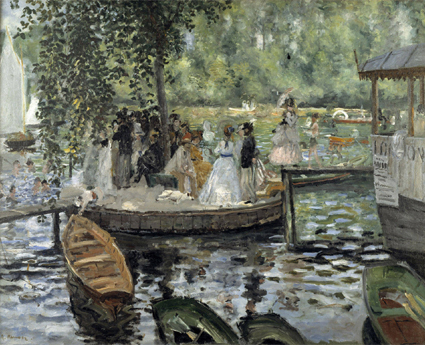Pierre-Auguste Renoir is the most imperfectly understood member of the Impressionist and Post-Impressionist generations. In his later years, inspired by the sculpture of classical antiquity and the paintings of Raphael, he focussed almost exclusively on painting the human figure – above all the female nude –because he felt that it was only through addressing such “timeless” subject matter that an artist could hope for immortality. The decision did his reputation more posthumous harm than good. A powerful strain of puritanical asceticism ran through much early modernist taste. So while Cezanne, for example, was lauded to the skies for his knottily cerebral engagement with landscape and human perception, Renoir’s frank sensuality was seen as cause for suspicion. So too was the rich, ripe, bright palette with which he painted his late bathers, and other nudes. The idea was put about that he was a “merely” decorative artist, a hedonistic also-ran.
There were always those who realised that this was a far cry from the truth, and that Renoir – just as much as Manet or Monet or Degas – was responsible for reinventing the language of painting during the late nineteenth and early twentieth centuries. His most significant and sensitive admirers were themselves artists – Picasso and Matisse, in particular, who were both profoundly influenced by his work, to which they turned constantly for inspiration, throughout their careers.
A new exhibition at the National Gallery, “Renoir Landscapes: 1865-1883”, attempts to rekindle a broader appreciation of Renoir’s firebrand originality. It does so by focussing on the landscapes that he created during the first two decades of his career – above all the early, experimental pictures he painted side-by-side with friends such as Claude Monet and Alfred Sisley during the formative years of the Impressionist movement.
The exhibition opens...


